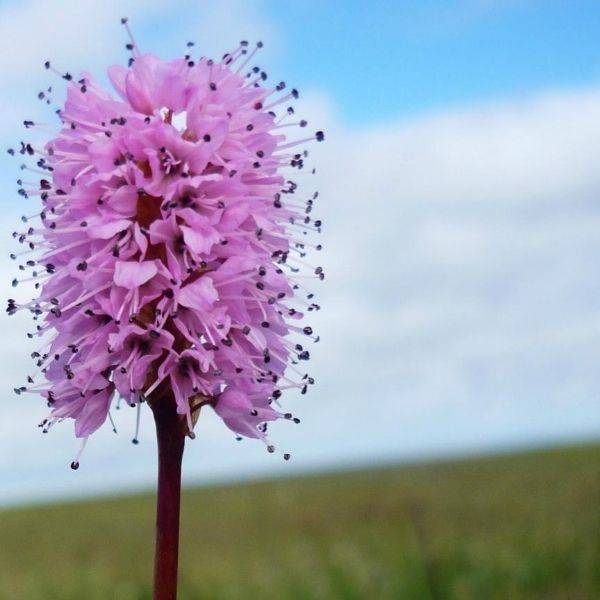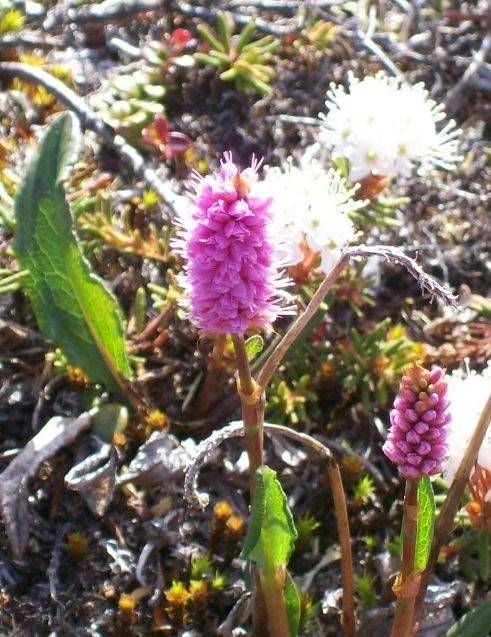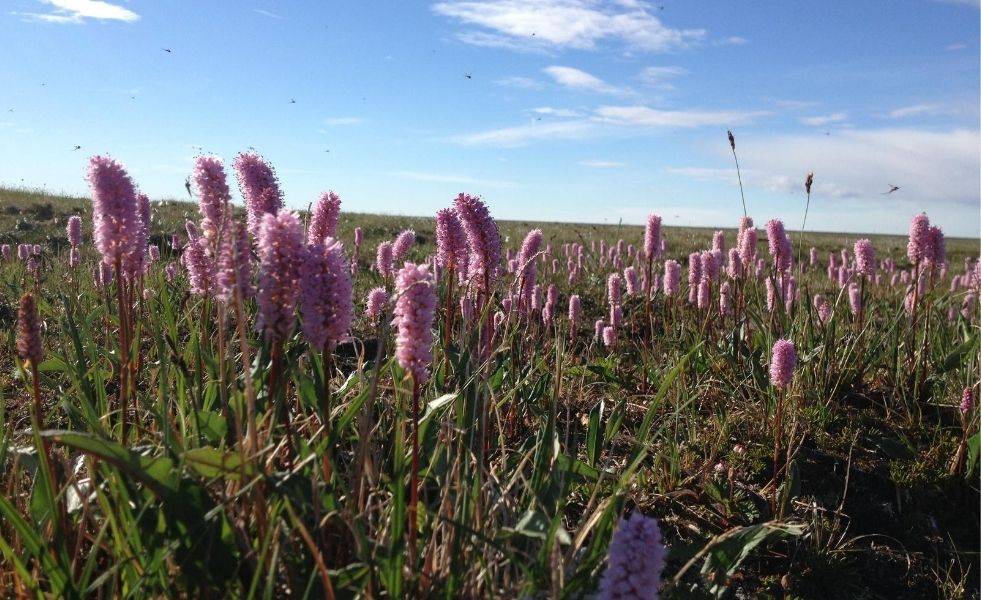Common Bistort
Also called pink plumes
- Iñupiaq name: Ippiq or Ippigich or Qaqauraq
- Family: Polygonaceae
- Scientific name: Polygonum bistorta
- Distinguishing characteristics: Fleshy leaves long, thick and oval-shaped, with edges slightly curled underneath. Tall flower spike on a red-green stalk with a crowded cluster of small pink flowers near the tip.
- Similar species: Common bistort is a very unique plant that doesn't have any look-alikes in the tundra. The tall, pink flower spike rising above the snow in late spring is unmistakable!
- Habitat: Wet places, snowbeds. Prefers acidic soil.
- Best time to harvest: Late spring to early summer.
- Uses: Leaves are sour and nutritious, containing vitamin C and the precursor to vitamin A. Leaves may be eaten raw in salads or preserved in seal oil. Traditionally, bistort root has been used as an astringent.



Photos courtesy of the Grand Valley State University Arctic Ecology Program
